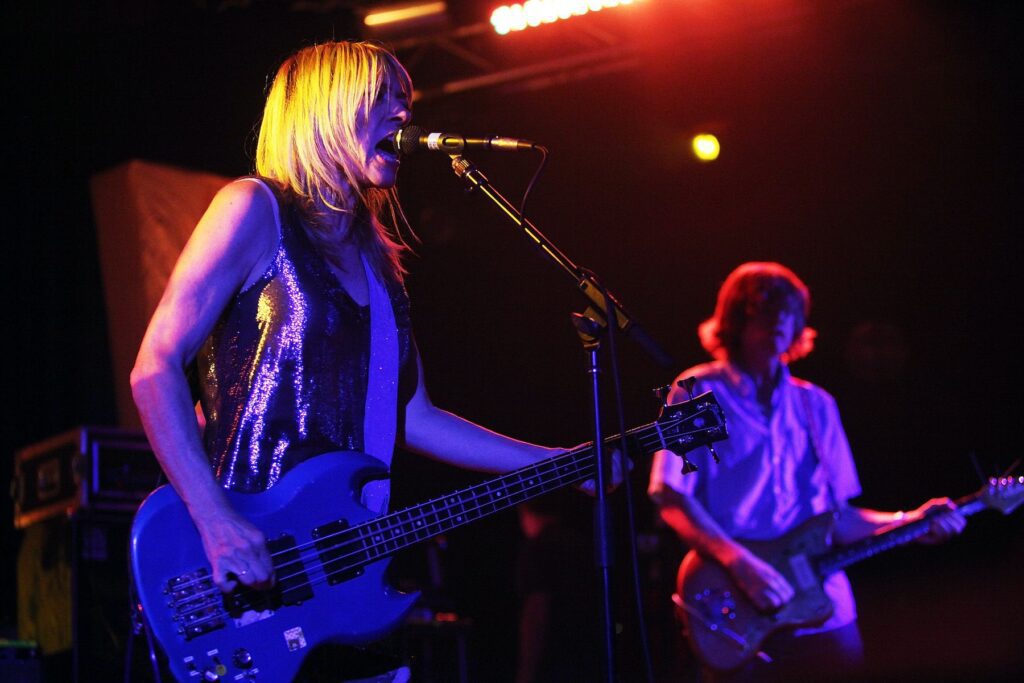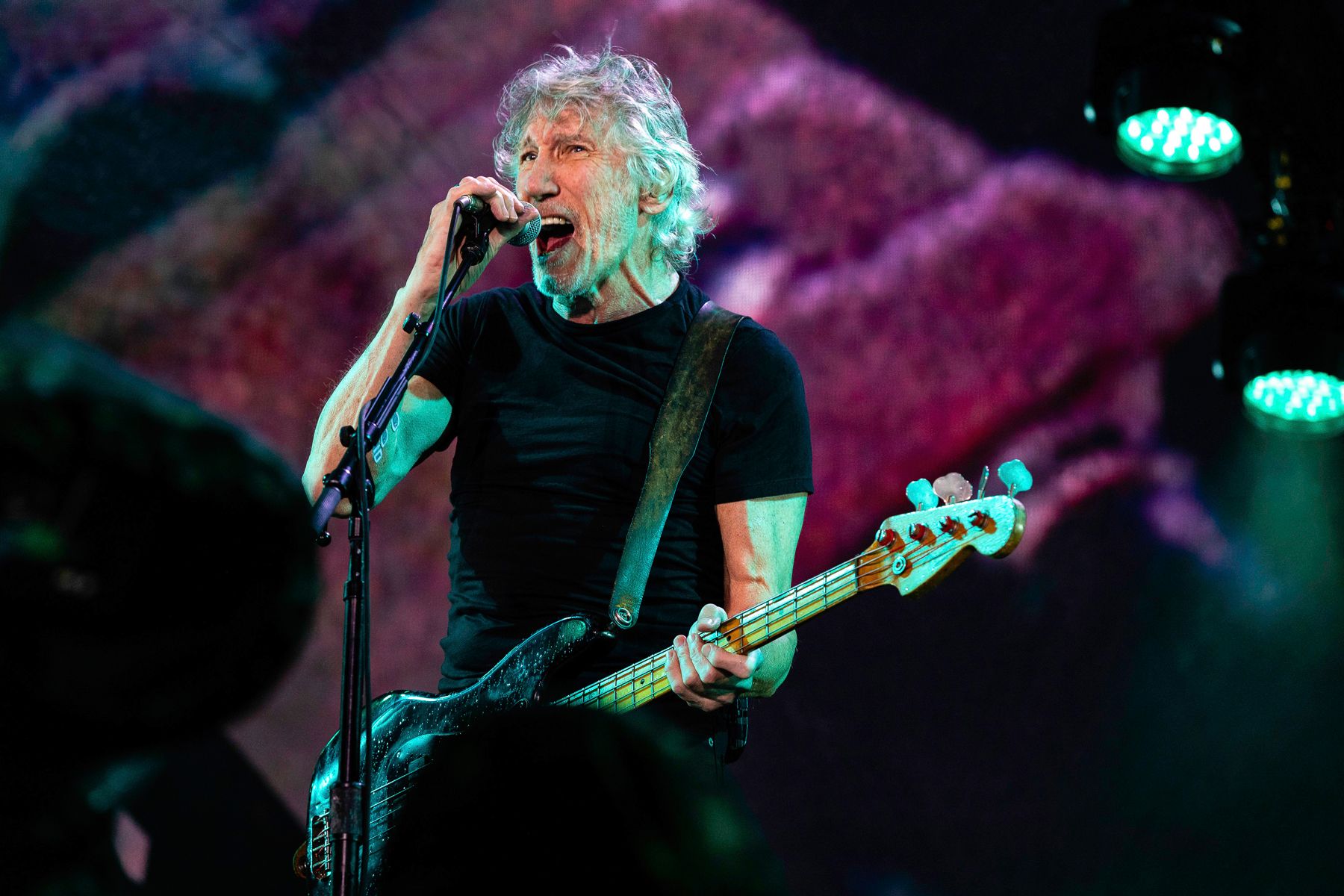
More Sonic Youth Music Is Coming. A Reunion? Not Quite Yet
This past November marked the 10th anniversary of Sonic Youth’s farewell show, just after Kim Gordon and Thurston Moore announced their own split. Yet for those who still follow the band, it’s almost as if Sonic Youth never left the building. A steady stream of concert tapes and rarities comps has been released on Bandcamp; deluxe editions of Washing Machine and Sister are in the works; and Moore is at work on a memoir, Sonic Life, that will chronicle the band’s story up through their last album, The Eternal. And coming in March will be In/Out/In, a new compilation of rare instrumental jams from the 2000s.
The only thing missing, of course, is a reunion — which, according to guitarist Lee Ranaldo, is the one band project not in the pipeline. Ranaldo says the group has received “blank check offers” over the years from major festivals but says they’ve never been seriously considered (or that the offers themselves weren’t deemed serious enough). “We’re all living and breathing, so you never know what the future will bring,” he says. “But we have not entertained it at this point. It’s something that hangs out there and people are always asking about.”
For outside observers, one factor could be Moore and Gordon’s divorce, but Ranaldo is upfront about his own hesitations. “I’ve maintained my friendship with everyone in the band to speak to everyone with some degree of regularity, but learning all those old songs doesn’t appeal to me that much,” he says. “The Sonic Youth way [for a reunion] would be to write new material, which would give us a reason to do anything — a whole set of new music as opposed to being a jukebox. And festivals aren’t the most rewarding thing to do except for your pocketbook.”
“I don’t know where we would be if we hadn’t stopped,” he adds. “I go and see Wilco and they’re still on the road with all this gear. We were in that position at some point. But I guess my head is in a different space. I can’t imagine doing it that exact same way.”
At the very least, Sonic Youth is reconvened on the forthcoming In/Out/In, which collects instrumentals cut between 2000 and 2010, when the band was beginning work on albums like Murray Street and Rather Ripped. Sonic Youth had contributed two of its tracks to a limited-edition, 1,000-LP box set compilation of artists on the Three Lobed label. A few years ago, Three Lobed’s Cory Rayborn had the idea of asking Sonic Youth for more of their material for a standalone album to help the label celebrate its 20th anniversary. According to Ranaldo, the project’s initial point person, the four members, including drummer Steve Shelley, agreed: “This was a chance to put some different, non-vocals experimental stuff together as a little package and highlight the last decade of the band in an interesting way.”
The five tracks include “Basement Contender,” a languid jam recorded in Moore and Gordon’s Northampton, Massachusetts, home in 2008; “Social Static,” a more ambient sound-collage work with then-member Jim O’Rourke, from 2000; and the guitar-driven “Out & In,” which feels like a classic SY track but without anyone singing along. “In & Out,” parts of which were cut at a soundcheck of a California show in 2010, is likely one of the band’s last recordings. (The band’s actual final work is SYR9: Simon Werner a Disparu, the soundtrack for the French film Lights Out, which Ranaldo says is a favorite of despite “a bit of tension going on” in the band at the time.)
Some of the earliest tracks on In/Out/In were cut at Echo Canyon, the studio space that the band took over in downtown Manhattan for over a decade. “We were in a golden period,” says Ranaldo, who’s such a Beatles fan that he watched their recent Get Back mini-series several times. “It’s like what the Beatles had when started working at their own place. It didn’t last long for them, but for us, it lasted 10 years. After that, people were getting a bit more scattered and had a lot more outside interests going on. Things were more in flux.”
In/Out/In won’t be the last Sonic Youth archival dig. A deluxe version of 1995’s Washing Machine, largely completed but awaiting release, will include demos, live material from that period, and several different version of their epic “Diamond Sea.” (That release may not come until the album’s 30th anniversary, so be prepared to wait at least three years.) A deluxe edition of 1987’s Sister is also being readied.
Taken together, these reissues and compilations recall a time when Sonic Youth and its peers in the Eighties and Nineties were pushing rock into unchartered, paradigm-changing territory, less reliant on traditional song structures or guitar solos and more on a whirlwind sonic blur. With hip-hop having overtaken rock as the leading mainstream music of its time, those days seem even farther away, and Ranaldo reluctantly agrees. “Nirvana could be said to have put the nail in the coffin by blowing it wide open,” he says. “I wouldn’t want to put it on their shoulders. But it certainly seems like the thread seems to have gotten lost.”
“The world has kind of moved on to other stuff. Most of what my kids are listening to is not guitar-driven. It’s computer-made music. Some of the most mainstream hip-hop has some of the most experimental production. Some of those tracks are incredible-sounding. It’s like the way we used to talk about Sgt. Pepper or Pet Sounds. I don’t hear that experimentation in the rock world.”
And whether or not Sonic Youth will conjure those bands again onstage, even once, remains to be seen. “For a long time,” Ranaldo says, “my initial response to people who did [reunion concerts] was, ‘They’re just doing it because they want to make money.’ It felt like such a cheapening way to go about that. But there’s a whole other side of it, people who want to see a band again. I felt that way when I saw Television and Gang of Four reunion shows. I didn’t care why they were doing it. It was just marvelous to see them again. But we haven’t had to deal with it yet. It remains an open question mark.”


